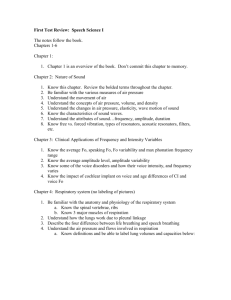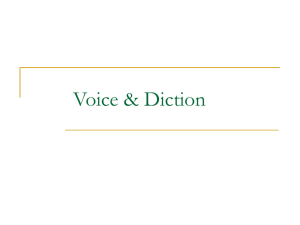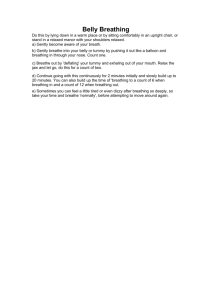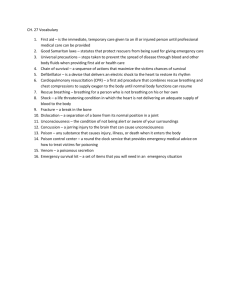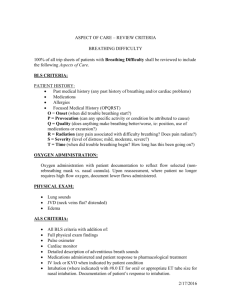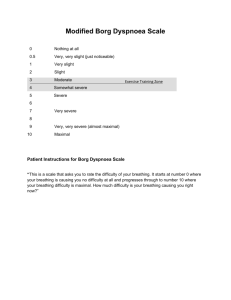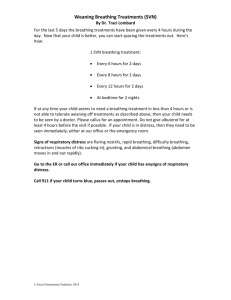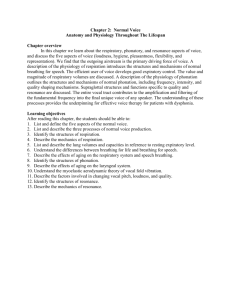voice_dictionnotes (1)
advertisement
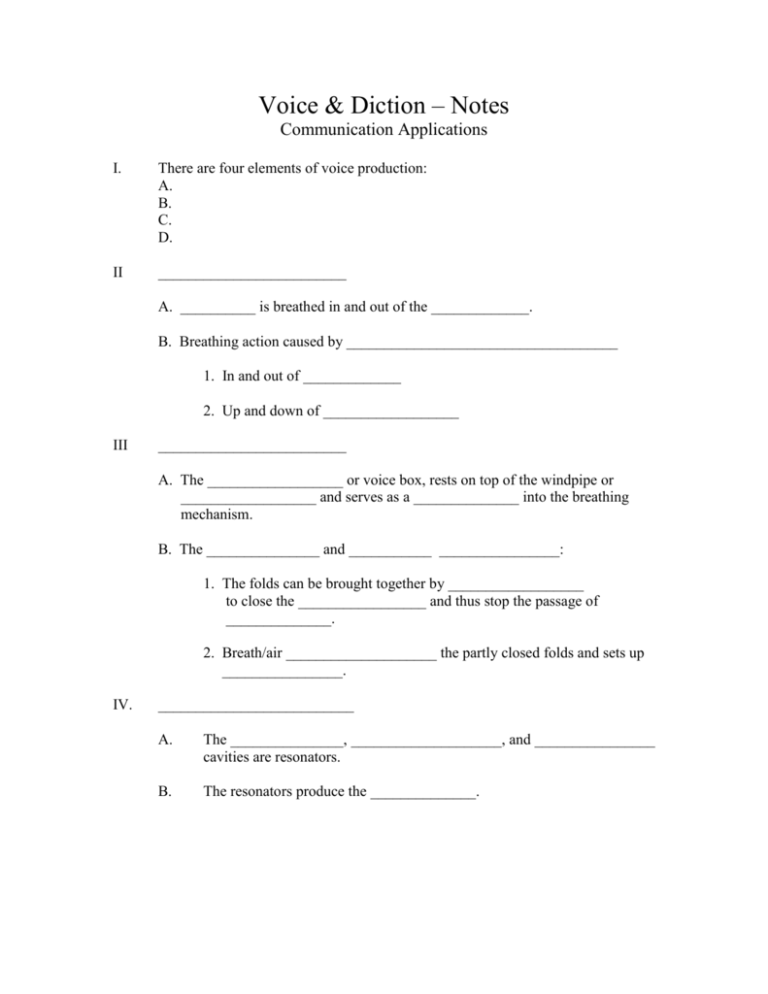
Voice & Diction – Notes Communication Applications I. There are four elements of voice production: A. B. C. D. II _________________________ A. __________ is breathed in and out of the _____________. B. Breathing action caused by ____________________________________ 1. In and out of _____________ 2. Up and down of __________________ III _________________________ A. The __________________ or voice box, rests on top of the windpipe or __________________ and serves as a ______________ into the breathing mechanism. B. The _______________ and ___________ ________________: 1. The folds can be brought together by __________________ to close the _________________ and thus stop the passage of ______________. 2. Breath/air ____________________ the partly closed folds and sets up ________________. IV. __________________________ A. The _______________, ____________________, and ________________ cavities are resonators. B. The resonators produce the ______________. V. VI. __________________________ A. __________________ sounds are made. B. The articulators are: _________, _________________, _______________, _____________, and ____________. C. There is a tendency to drop endings of words: _______, ________, ________, _______, _________. Parts of the body involved in voice production: A. B. C. D. E. F. G. H. I. J. VII. Four phases in voice improvement 1. ________________: the ability to be _________. Works along with _____________ breathing. 2. ________________: the quality and ____________ of your voice speak ___________ than the _____________. (non-verbal aspect) 3. ________________/ ____________________: we enjoy better, listening to those who have a variety in ____________, ________________ and _________________. 4. _______________: how well can you be _________________________. Articulation- speaking clearly Pronunciation- look up a word if you don’t know how to pronounce it Dialect Regions a. Eastern b. Southern c. Midwest Voice & Diction – Notes Communication Applications I. There are four elements of voice production: A. Respiration – breathing; inhalation & exhalation of air B. Phonation – sound production; vocalization C. Resonation – unique sound of voice; tone D. Articulation – clear and distinct sounds II Respiration A. Air is breathed in and out of the lungs. B. Breathing action caused by changing the capacity of the chest cavity. 1. In and out of ribs 2. Up and down of diaphragm III Phonation A. The larynx or voice box, rests on top of the windpipe or trachea and serves as a valve into the breathing mechanism. B. The glottis and vocal folds: 1. The folds can be brought together by muscular movement to close the glottis and thus stop the passage of air. 2. Breath/air vibrates the partly closed folds and sets up sound waves. IV. Resonation A. The nose, pharynx, (throat) and sinus cavities are resonators. B. The resonators produce the tone. V. Articulation A. Consonant sounds are made. B. The articulators are: lips, teeth, tongue, palate and jaw. C. There is a tendency to drop endings of words: t, g, ng, s, th. VI. Parts of the body involved in voice production: A. B. C. D. E. F. G. H. I. VII. Diaphragm – breathing muscle Lungs – 2 air sacs Trachea – wind pipe Larynx – voice box Tongue - articulator Teeth - articulator Palate – hard and soft Nasal Cavity - resonator Pharynx – (throat) resonator Four phases in voice improvement A. Audibility: the ability to be heard. Works along with diaphragmatic breathing. B. Pleasant quality: the quality and tone of your voice speak louder than the words. (non-verbal aspect) C. Flexibility/ Vocal Variety: we enjoy better listening to those who have a variety in pitch, rate and force. D. Intelligibility: how well can you be understood. Articulation- speaking clearly Pronunciation- look up a word if you don’t know how to pronounce it Dialect Regions: a. Eastern b. Southern c. Midwest
